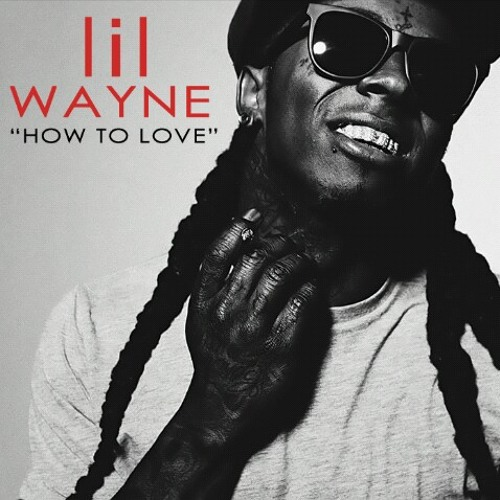Like LL Cool J’s much-derided 1987 slow jam, “I Need Love,” Lil Wayne’s latest marks a jump-the-shark moment for the hip-hop hitmaker. But he wouldn’t be the first thug to “cuddle rap,” argues THR contributor Jeff Weiss.
BY JEFF WEISS

Every thug may need a lady, but if they want to earn radio play, every thug rapper better have a loverboy ballad. That’s the paradox that’s plagued the commercial wing of hip-hop since Ja Rule and J. Lo ruled the charts around the fin de siècle. You can spend a lifetime lionizing the lifestyle of bullets and Bentley’s, but if you want a major label to release your album, you better pretend to be sensitive enough to make Dashboard Confessional seem like Stone Cold Steve Austin.
Ja Rule was far from the first to make a play for the fairer sex. At the dawn of the Reagan era—only a year after “Rapper’s Delight” heralded hip-hop as a chart force — Kurtis Blow appeared shirtless on his eponymous debut while purring about how all he “wanted in this world was to find that girl.” But if Blow was the Jackie Robinson of cuddle rap, LL Cool J was its first crossover superstar — a muscular gentle giant, scotch taped to the lockers of Junior High girls, and ready to be marketed to Tiger Beat and Bop. He was also the scorched earth slasher known as Jack the Ripper who murked Kool Moe Dee in a series of seminal rap battles.
With his 1987 single, “I Need Love,” a new paradigm was born. Rappers may want to decapitate their enemies, but clearly (LL implied) this was just psychological transference based upon his inability to find a girl worth giving roses to. But at first, most respected artists steered clear — opting to preserve their hardcore bonafides. Sure, artists like Big Daddy Kane boasted a notorious ladies man rep (see also, Madonna’s “Sex” book), but A&R execs considered it a plus, not a requirement.
Morbidly obese rappers like The Notorious B.I.G. weren’t required to pretend to be pussy cats — he might have been “Big Poppa” but his idea of seduction was “eight tracks and six packs, while [he] hit that.” But even then, things were evolving. Tupac Shakur infamously told Biggie that the key to commercial success was “rapping for the bitches.” The importance of a sticky hook was more important than ever before, but the genre still minted stars like Big Punisher, a corpulent Puerto Rican emcee who managed to go platinum despite looking like a cross between Jabba the Hut and Slimer from Ghostbusters.
If the success of Ja Rule flipped conventional logic, 50 Cent stole the blueprint and returned it with valentines scrawled in red ink. Not only did every thug need a lady, they needed at least three or four ladies per album for purposes of dedicatory “baby-baby-baby” ballads. Allegedly, Dr. Dre balked at 50’s insistence on including Pinkberry-soft songs like “21 Questions,” but 50 explained that there had always been two sides to him. And when Get Rich or Die Trying became one of the most popular selling albums of all-time, his steroidal version of 2Pac’s vision became the rule.
Flash forward a half-decade later to the spring of 2008. Fresh off a dozen brilliantly rapped and irrepressibly weird mixtapes, Lil Wayne was on the verge of making the transition from underground king to pop star. With his credibility at an all-time high, he dropped “Lollipop,” an auto-tuned 50 Cent rip-off with an infectious sucrose beat and a hook penned by the late Static Major. It went nine times platinum, soared to the top of the Billboard charts, and cemented the dreadlocked New Orleans native in the top rung of pop’s firmament. Three years later, we are still living in the record’s shadow.
Enter “How to Love,” his latest and most cynical salvo to crack the top 10 of the pop charts. Watching the video for the song, complete with its reportedly Wayne-penned plot lines presumably ripped from Reality Bites, it’s tempting to say that Wayne has finally jumped the shark. After all, there seems to be a certain ironic resemblance to someone water skiing over a lake of sharks to the art of writing a hit single during a nihilistic era bereft of any notions of artistic integrity (at least at the mainstream level).
The song’s producer Noah “Detail” Fisher told MTV News that “after [Wayne] showed me the video concept, it’s like, ‘Yo, dude, we’re gonna be at the Country Awards with this record’… We gonna be sitting next to Taylor Swift.’ ” Indeed, the video champions a morality that Michelle Bachmann might endorse. An impoverished girl grows up with a father in prison, she ends up getting molested, becomes a stripper, then a prostitute, and finally contracts H.I.V. Suddenly, the video rewinds to offer the happy ending a la Wayne’s World. The girl’s mom marries a nice man, she ends up going to college, finding her own prince charming, and then gets pregnant. Presumably, they throw a tea party to celebrate.
What’s so striking about “How to Love” is how readily it abandons the pretense of being a rap song. Despite still being one of the best rappers on earth (see his recent performances on “6 Foot, 7 Foot” and Chris Brown’s “Look At Me Now”), Wayne is content to do his off-key warbles over acoustic guitars so effete they make James Blunt look like Method Man. And yet, it’s still a massive hit, one that will inevitably force a whole lot of formerly respectable rappers into pseudo-romantic frippery. Like 99.9 percent of rappers on a major label, Wayne sold out but at least he’s still selling — a rarity in the attenuated industry.
Source: https://www.hollywoodreporter.com/news/general-news/lil-waynes-how-love-why-227361/
